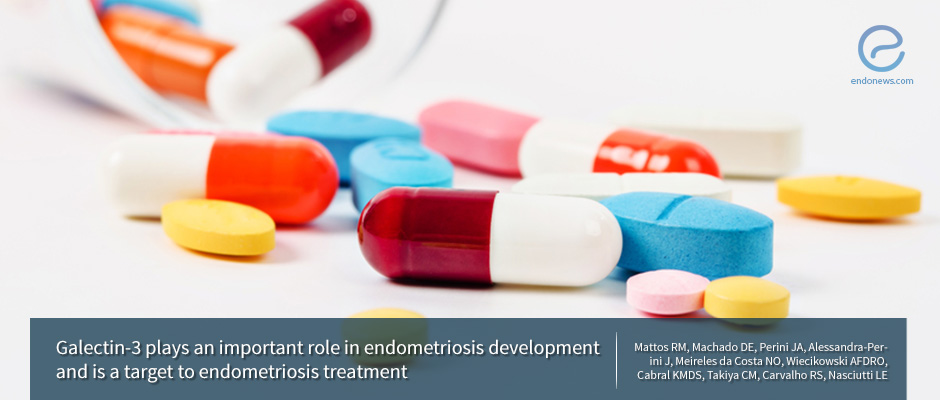Gal-3 can be a pharmacological target in endometriosis treatment
Mar 25, 2019
Gal-3 plays a role in development and maintenance of endometriosis
Key Points
Highlights:
- Galectin-3 (Gal-3) plays a role in the development of endometriotic lesions:
- Inhibition or absence of Gal-3 diminishes endometriotic lesions, mainly by reducing new blood vessel formation and inflammation.
Importance:
- Data from this study indicate a relevant role of Gal-3 in endometriosis development and highlight a potential endometriosis treatment strategy utilizing Gal-3 inhibitor
What’s done here?
- Using healthy and Gal-3 knock-out mice, the role of Gal-3 in the development of endometriotic lesions was investigated, and the role of its inhibitor, Gal3c was explored as a potential treatment strategy.
Data:
- Gal-3 expression was associated with an increased (approximate 11-fold) of endometriosis development, with larger lesions.
- In Gal-3 knockout mice endometriosis, the expression of angiogenic factors and also the vascular density were higher.
- When the presence of macrophages were examined thinking that macrophages are important inducers of angiogenesis and endometriosis is an inflammatory disease, a greater amount of macrophages in Gal-3 expressors compared to Gal-3 non-expressing lesions.
- Gal-3C treatment reduced endometriotic lesions without toxicity.
Limitations of the study:
- Studies are done in mice, thus, the results may not be readily translatable to humans.
Lay Summary
Galectins are known to play a significant role in angiogenesis, which is a key event contributing to the development of many disease conditions, one of which is endometriosis.
Past studies, upon examining several human endometriotic lesions, showed that Galectin-3 (Gal-3) was overexpressed in the endometrium of women with endometriosis compared to that of women without endometriosis; and in peritoneal as well as deep infiltrating endometriotic lesions. These findings formed the basis of the current study, which investigated a possible role for Gal-3 in the development and maintenance of endometriosis using mice models.
This recently published study in Molecular and Cellular Endocrinology, authored by Medina de Mattos et al., showed that Galectin-3 plays a role in endometriosis development; and its inhibition via a recombinant peptide, Gal3C, diminishes the endometriotic lesions in mice.
Specifically, the study showed that mice lacking Gal-3:
1) developed about 30% less endometriotic lesions when compared to the normal controls,
2) expressed lower levels of angiogenic factors – proteins that induce new vessel formation – such as VEGF and VEGFR-2, and
3) showed reduced inflammation.
In simplistic terms, without functional Gal-3, mice did not develop as many endometriotic lesions, as many new blood vessels, or a profound inflammation; indicating that blocking Gal-3 might be a viable treatment strategy for endometriosis. In fact, the authors, using Gal-3 inhibitors, were able to decrease endometriotic lesions in mice. This was achieved by reducing the expression of angiogenic factors and inflammation process.
The study concluded that Gal-3 affects the development of endometriotic lesions as well as new blood vessel formation and inflammation, three events that are indeed linked to each other. More importantly, Gal-3 was offered as a therapeutic target for the treatment of endometriosis, pending further investigations.
Research Source: https://www.ncbi.nlm.nih.gov/pubmed/30753853
Angiogenesis Endometriosis Gal3C Galectin-3 Therapeutic target

